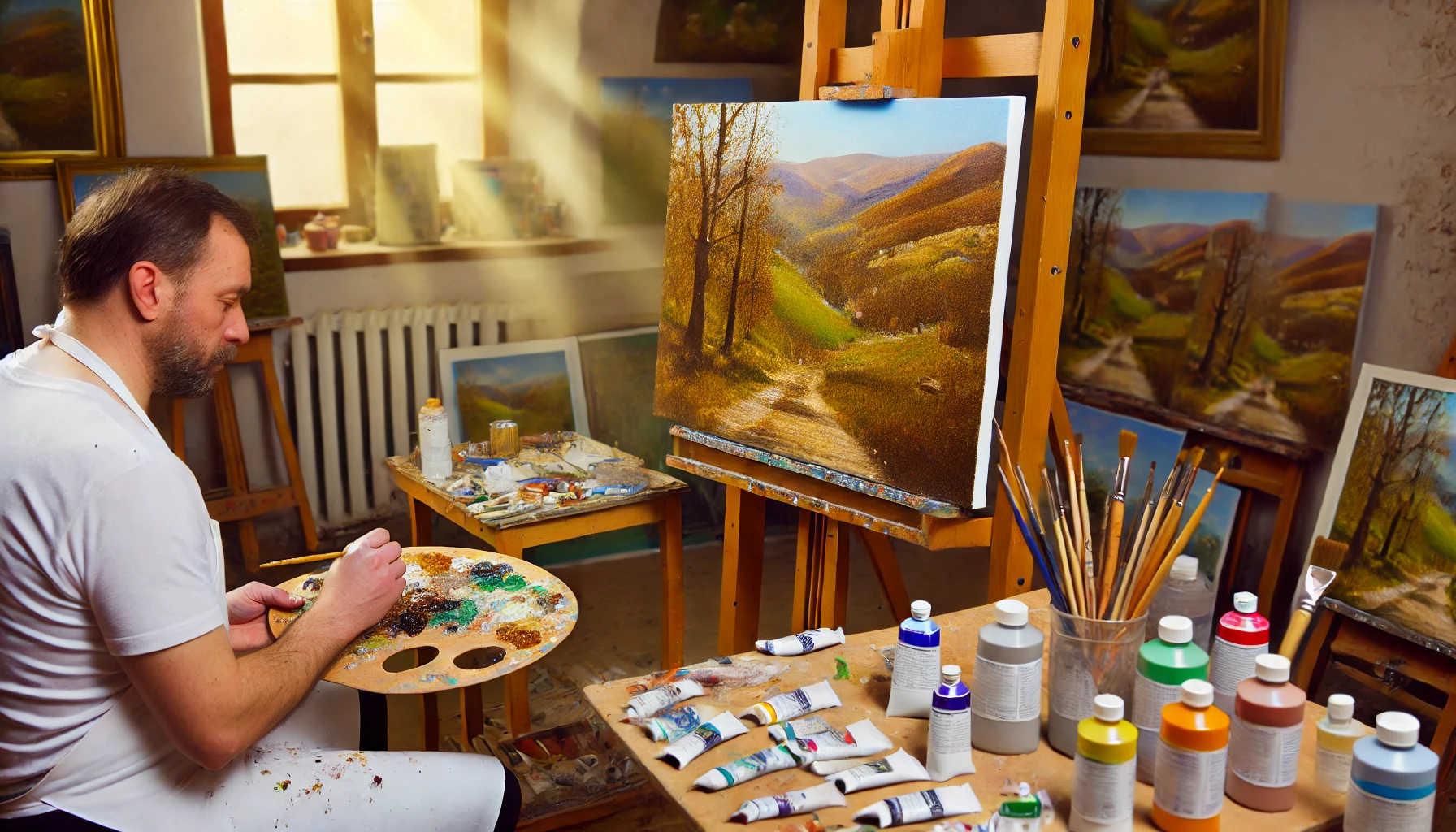Realistic Effects in Oil Painting
Oil painting is a timeless art form that has captivated artists and enthusiasts for centuries. The ability to create realistic effects in oil painting is a skill that many aspire to master. While it requires patience and practice, it is an achievable goal with the right techniques and understanding. In this article, we will explore the essential methods and tips for achieving realistic effects in oil painting, providing you with a comprehensive guide to enhance your artistic journey.
Understanding the Basics
Before diving into specific techniques, it’s crucial to have a solid foundation in the basics of oil painting. This includes understanding your materials, such as the different types of brushes, paints, and mediums. Oil paints are known for their rich, vibrant colors and their ability to be manipulated over time, allowing for detailed and realistic results.
Key Materials for Realism
- Quality Brushes: Invest in a variety of high-quality brushes, including flat, round, and filbert brushes. Each type serves a different purpose in creating textures and details.
- Oil Paints: Use professional-grade oil paints. The quality of the paint affects the vibrancy and longevity of your artwork.
- Mediums: Understand the use of different mediums like linseed oil, turpentine, and damar varnish. These can alter the drying time and finish of your painting.
- Canvas: Choose a good-quality canvas that has been properly primed. A smooth surface is ideal for detailed work.
Techniques for Realistic Effects
1. Layering and Glazing
One of the most effective techniques for achieving realism is layering and glazing. Start with an underpainting using thin layers to establish the composition and values. As you build layers, use glazing to add depth and richness to your colors. Glazing involves applying a transparent layer of paint over dried layers to modify the color and create luminous effects.
Example: To paint realistic skin tones, begin with a monochromatic underpainting to define the shadows and highlights. Once dry, apply thin glazes of color to build up the skin tones gradually. This technique allows for subtle transitions and a lifelike appearance.
2. Blending
Blending is essential for smooth transitions and realistic textures. Use soft brushes or blending tools like fan brushes or soft sponges to merge colors seamlessly. Work wet-on-wet to blend edges and create gradients. For finer details, a dry brush technique can also be effective.
Tip: When blending, avoid overworking the paint, as it can lead to muddy colors. Use gentle strokes and blend just enough to achieve the desired effect.
3. Detailing
Realism lies in the details. Focus on small, intricate elements that make your subject lifelike. This includes fine lines, textures, and subtle variations in color. Use smaller brushes for precision work, and take your time to capture every nuance.
Example: When painting a realistic eye, pay attention to the reflection of light, the intricate patterns of the iris, and the subtle variations in the whites of the eyes. Each detail contributes to the overall realism.
4. Light and Shadow
Understanding light and shadow is crucial for realism. Observe how light interacts with your subject and replicate it in your painting. Create a strong contrast between light and dark areas to add depth and dimension. Use a combination of soft and hard edges to depict different textures and surfaces.
Tip: Use a value scale to plan your light and shadow areas before you start painting. This helps maintain consistency and balance throughout your work.
Practical Tips for Realistic Effects
- Reference Material: Always use high-quality reference photos or real-life observations. Accurate references ensure that your proportions, colors, and details are true to life.
- Patience and Practice: Achieving realism takes time. Be patient with your progress and practice regularly. The more you paint, the better you will understand the techniques and develop your style.
- Feedback and Critique: Seek feedback from fellow artists or mentors. Constructive critique can help you identify areas for improvement and refine your skills.
- Experiment and Adapt: Don’t be afraid to experiment with different techniques and tools. Adapt what works best for you and incorporate it into your process.
When it comes to mastering realistic effects in oil painting, understanding the interplay of light and shadow, employing layering and glazing techniques, and focusing on intricate details are key. Utilizing high-quality materials, practicing blending, and consistently referring to accurate reference materials will significantly enhance your ability to create lifelike artwork. These fundamental practices, combined with patience and regular critique, will guide you toward achieving remarkable realism in your oil paintings.
Conclusion
Achieving realistic effects in oil painting is a rewarding pursuit that combines technical skill with artistic vision. By mastering the basics, employing effective techniques such as layering, blending, and detailing, and continually refining your approach, you can bring your subjects to life with stunning realism. Remember, the journey to realism is a gradual process that requires dedication and a willingness to learn. Embrace the challenges, celebrate your progress, and, most importantly, enjoy the art of oil painting.

